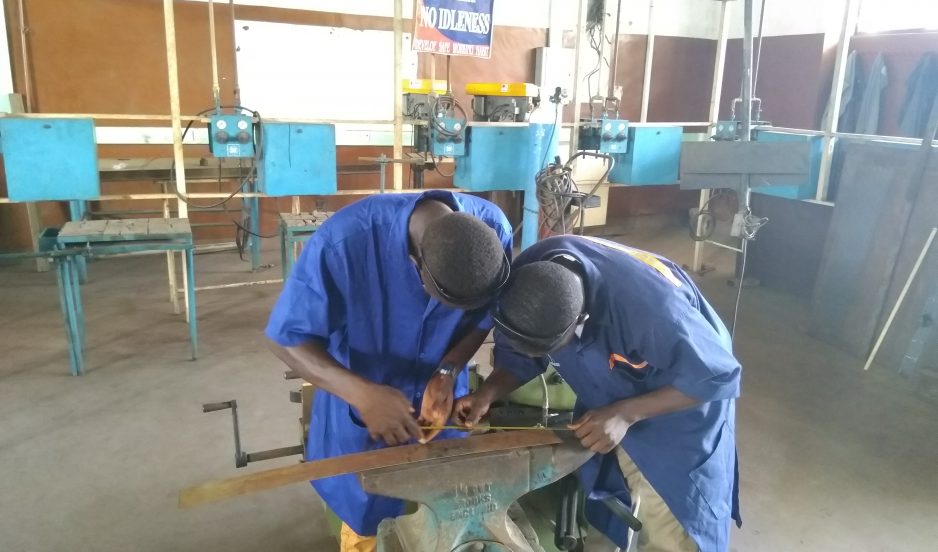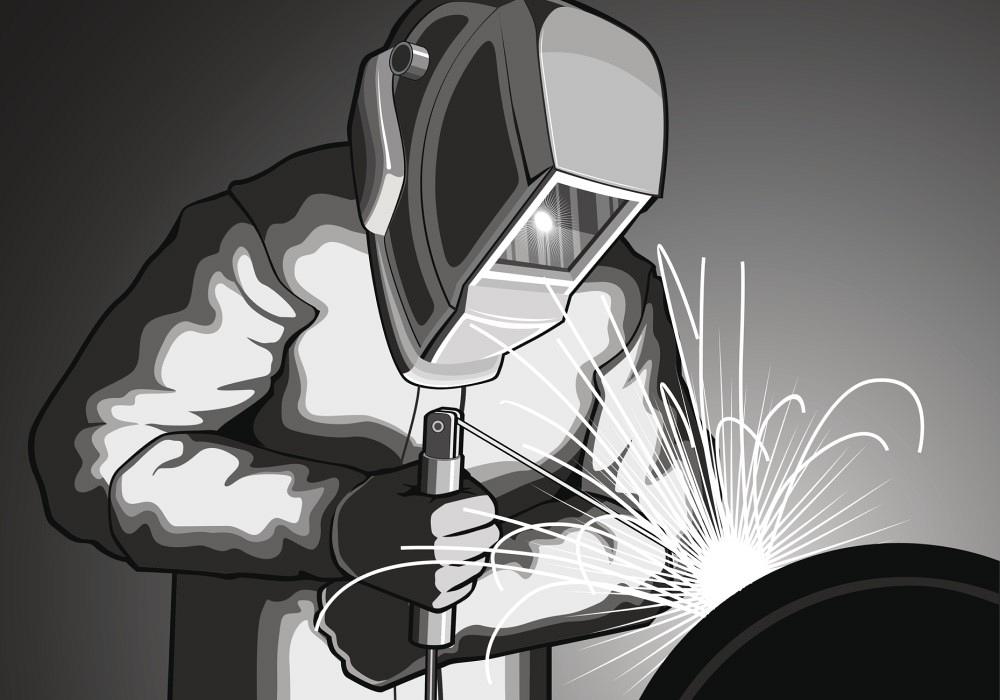Everything about Welding: Secret Insights Into Techniques and Best Practices for Success
Welding includes a range of methods, each fit for details products and applications. Recognizing these methods, such as GMAW, SMAW, and TIG, is vital for attaining perfect outcomes. The right equipment and safety and security techniques can not be ignored. As preparation and troubleshooting play vital roles in the welding process, mastering these elements can significantly enhance the quality of the last item. What are the crucial aspects that ensure a successful weld?
Comprehending Different Welding Techniques
Welding techniques incorporate a variety of approaches, each matched to details applications and products. Amongst the most typical techniques are Gas Metal Arc Welding (GMAW), Secured Steel Arc Welding (SMAW), and Tungsten Inert Gas Welding (TIG) GMAW, additionally called MIG welding, is popular for its rate and convenience, making it ideal for thin products. SMAW, or stick welding, is favored for its simpleness and efficiency in outdoor settings, especially with thicker steels. TIG welding supplies precision and control, making it suitable for elaborate job and non-ferrous metals (Fabrication). Each strategy has its special advantages and considerations, allowing welders to choose the finest technique based on the task's requirements, product kind, and desired end results. Understanding these methods is important for effective welding
Important Welding Devices and Devices
While various welding methods need details skills, the best devices and tools are similarly crucial for achieving high quality results. Vital welding equipment includes welding equipments, which differ relying on the method-- such as MIG, TIG, or stick welding. Safety equipment, consisting of aprons, helmets, and gloves, guarantees safety and comfort during the process. In addition, clamps and fixtures help secure materials in position, making sure accuracy in welds. Consumables like welding rods, cord, and protecting gas are likewise critical parts that affect the top quality of the weld. In addition, devices such as grinders and cutters promote surface area prep work and post-weld completing, adding to an expert result. Spending in high-quality tools eventually improves the efficiency and performance of welding jobs.
Safety Practices in Welding
Correct safety and security methods are necessary in the welding market to protect employees from prospective hazards. Welders have to use suitable individual protective equipment (PPE), consisting of helmets with correct shading, gloves, and flame-resistant clothes. Appropriate air flow is vital to lower exposure to harmful fumes and gases produced during the welding procedure. Additionally, employees must be learnt the correct handling of welding tools to stop mishaps. Fire precaution, such as maintaining flammable products away from the welding area and having fire extinguishers conveniently available, are needed. Regular assessments of equipment and work spaces can help determine possible hazards before they lead to mishaps. By sticking to these safety methods, welders can develop a more secure working environment and lessen risks connected with their profession.
Readying Materials for Welding
Preparing products for welding is a vital step that substantially affects the top quality and honesty of the end product (Belgrade Welding). Correct prep work involves cleaning up the surface areas to get rid of contaminants such as rust, dirt, and oil, which can jeopardize the weld. Techniques such as grinding, sanding, or using solvents are commonly used to achieve a clean surface area. In addition, ensuring that the materials fit with each other well is important; spaces can cause weak welds. It's likewise essential to take into consideration the placement and positioning of the parts, as this will certainly influence the ease of welding and the last result. Selecting the ideal filler product and guaranteeing compatibility with the base steels is crucial for accomplishing strong, resilient welds.
Tips for Achieving High-Quality Welds
Accomplishing top quality welds requires interest to information and adherence to finest methods throughout the welding procedure. Appropriate joint prep work is important, ensuring surface areas are complimentary and tidy from impurities. Choosing the suitable filler product and welding strategy based on the base metals is vital for optimal bonding. Maintaining regular travel rate and angle while welding can promote and prevent defects uniformity. Additionally, controlling heat input is crucial; too much heat see page can result in bending and compromised joints. If essential, on a regular basis evaluating the welds during the procedure allows for prompt adjustments. Ultimately, employing suitable post-weld treatments, such as cleaning and anxiety relief, can enhance the longevity and honesty of the weld, inevitably ensuring a successful result.
Repairing Common Welding Issues
Welding usually offers obstacles that can affect the quality and stability of the last item. Usual problems such as porosity, irregular weld grains, and getting too hot can emerge, each needing details troubleshooting techniques. Understanding these troubles is necessary for welders to enhance their skills and achieve ideal results.
Porosity Troubles Described
Porosity can usually be neglected, it stays an essential concern in welding that can endanger the integrity of an ended up item. Porosity refers to the existence of small gas pockets within the weld grain, which can weaken the joint and lead to premature failure. This trouble normally arises from pollutants, dampness, or incorrect securing gas protection during the welding procedure. To reduce porosity, welders need to verify that the base products are tidy and dry, utilize proper securing gases, and maintain constant welding criteria. Frequently examining the tools and environment can also assist recognize prospective problems before they materialize in the weld. Dealing with porosity properly is vital for attaining solid, durable welds that satisfy high quality criteria.

Irregular Weld Beans
Inconsistent weld grains can substantially affect the quality and strength of an ended up item. Different factors add to this problem, including incorrect traveling speed, inaccurate amperage setups, and inconsistent electrode angles. When the welder moves also swiftly, a grain might show up slim and lack infiltration, while moving too gradually can create too much accumulation. Additionally, making use of the wrong amperage can cause either undercutting or too much spatter, both of which concession weld integrity. The welder's strategy, such as irregular torch movement, can also lead to irregular bead look. To mitigate these troubles, welders should concentrate on sites maintaining constant, controlled movements and ensuring proper devices settings to achieve harmony in their welds. Consistency is essential to accomplishing trustworthy and strong welds.
Getting Too Hot and Bending Issues
Too much warm during the welding process can bring about substantial getting too hot and contorting issues, affecting the architectural stability of the workpiece. These problems usually manifest as distortion, which can endanger positioning and fit-up, making further setting up testing. Variables adding to overheating consist of the option of welding parameters, such as voltage and take a trip speed, as well as the kind of material being welded. To mitigate these problems, welders ought to keep constant travel speed and appropriate warmth input while keeping track of the work surface temperature. Furthermore, pre-heating or post-weld warmth treatment can help relieve tensions brought on by fast cooling - Montana Mobile Welding and Repair Fabrication. Routine assessment and adherence to finest methods are crucial in avoiding getting too hot and making certain the longevity and integrity of bonded structures
Regularly Asked Inquiries
What Are the Job Opportunities in the Welding Sector?
The welding industry uses varied occupation possibilities, including positions as welders, designers, inspectors, and instructors. Specialists can function in manufacturing, building and construction, aerospace, and vehicle markets, taking advantage of solid demand and affordable salaries in numerous roles.
Just How Can I Improve My Welding Rate Without Sacrificing Quality?
To enhance welding rate without giving up high quality, one must exercise efficient strategies, preserve tools, optimize setups, and boost hand-eye sychronisation. Normal training and seeking responses can also greatly add to achieving much faster, high-quality welds.
What Certifications Are Offered for Welders?
Various certifications exist for welders, consisting of those from the American Welding Society (AWS), the National Facility for Building Education and Research (NCCER), and numerous industry-specific organizations. These qualifications enhance employability and demonstrate skill efficiency.
Just How Does Welding Affect the Qualities of Metals?
Welding affects the properties of metals by altering their microstructure, which can lead to modifications in stamina, ductility, and solidity. Warm input and air conditioning prices throughout the procedure greatly affect these material qualities.
Can I Weld Dissimilar Metals Together?
